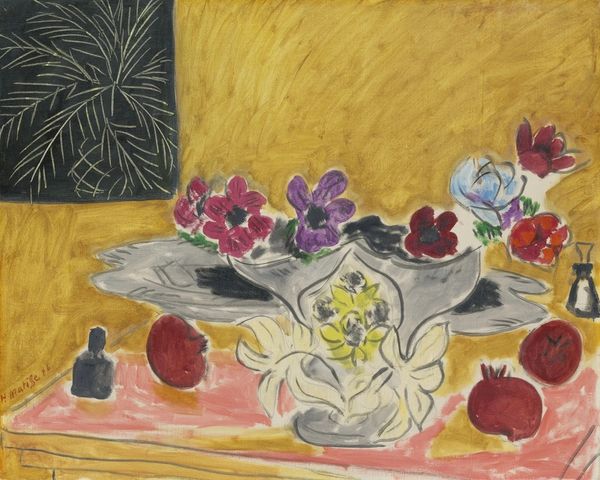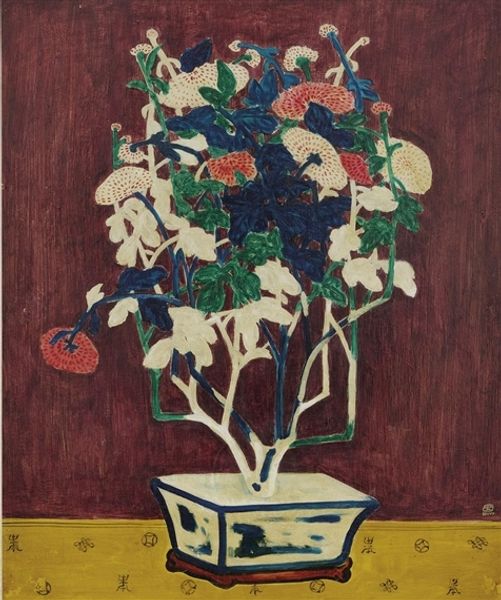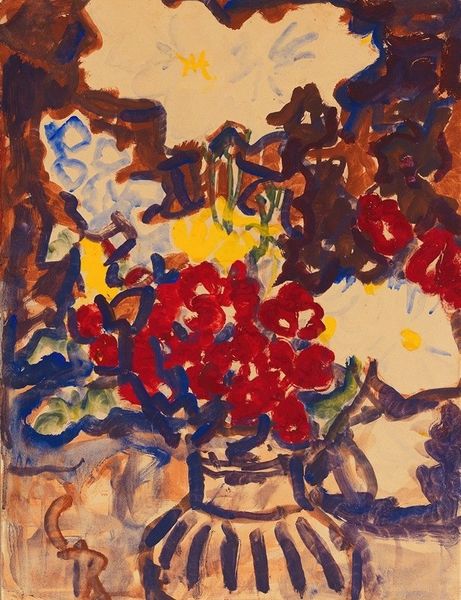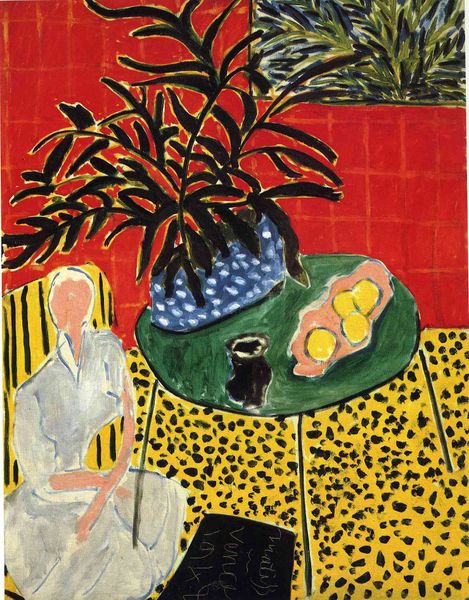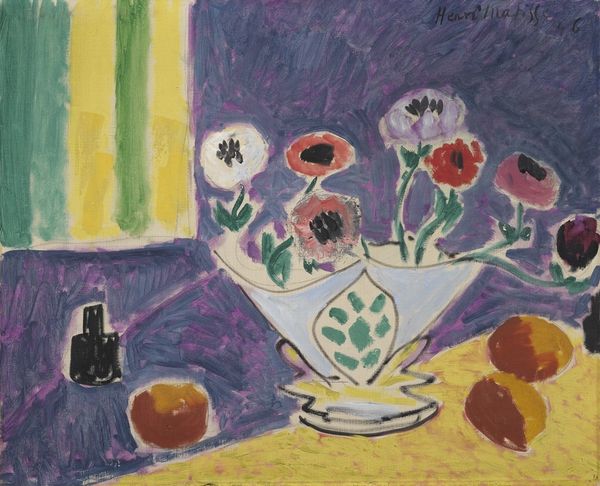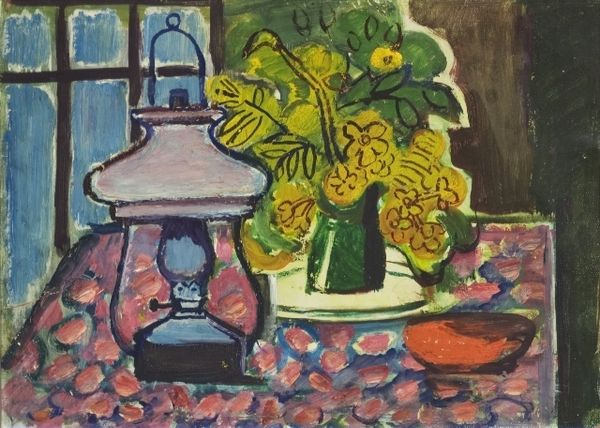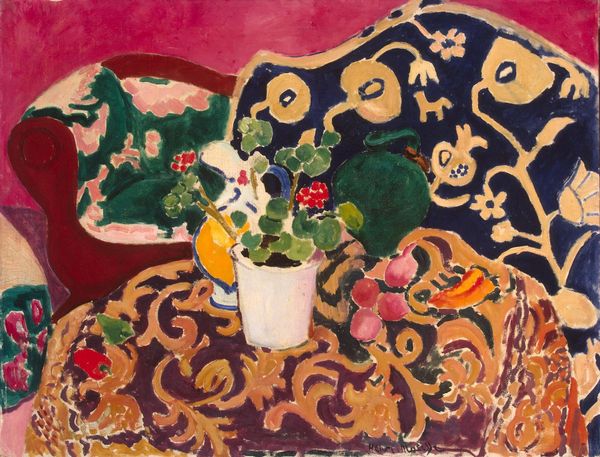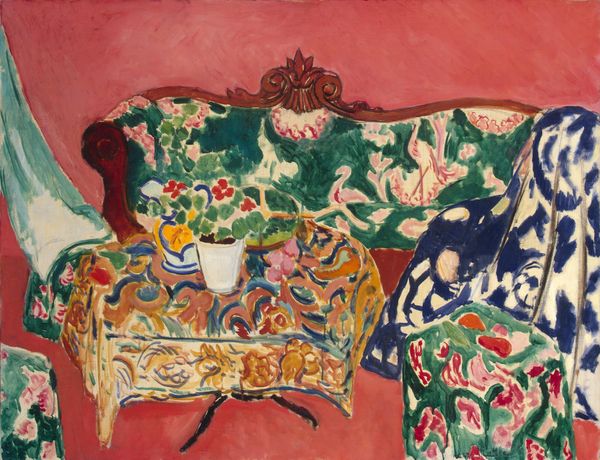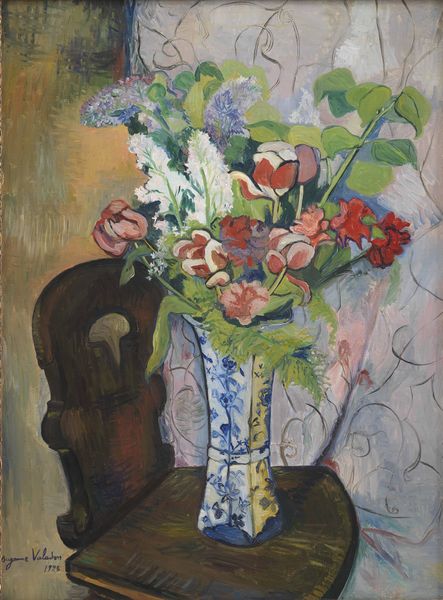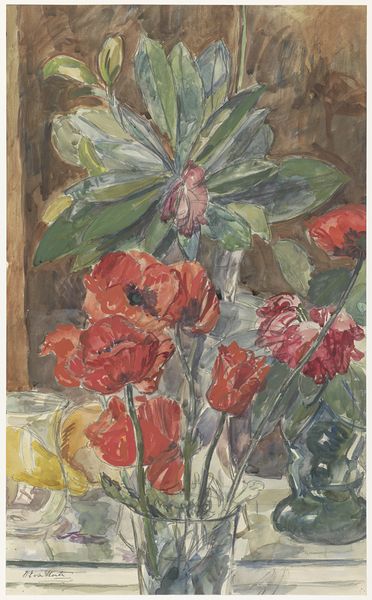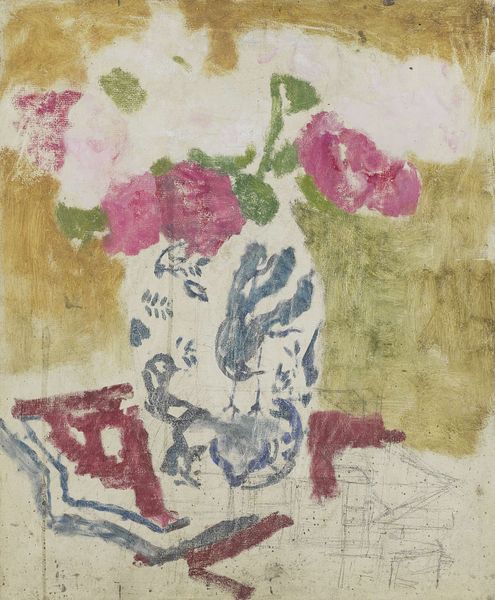
Copyright: Henri Matisse,Fair Use
Curator: This is Henri Matisse’s “Roses De Noel Et Saxifrage," painted in 1944. We can observe his experimentation with oil paints and rendering of intimate, domestic scenes. Editor: Wow, it’s such a vibrant burst of color. Like a defiant garden blooming indoors during… well, 1944. I get a sense of cozy resistance, if that makes any sense. Curator: It does. Considering the wartime context, we could read this as a material assertion of domestic space and continued cycles of consumption even under duress. The production of pleasure in bleak circumstances. Note also the use of floral patterns repeated in the wallpaper behind and the tablecloth—likely printed fabrics that democratized decorative arts. Editor: That’s it, cozy resistance. It's so Matisse, using bright color and accessible imagery to create joy amidst what must have been pretty bleak realities. I’m thinking about how creating that tabletop arrangement could be seen as a defiant creative act. Curator: Exactly, disrupting traditional hierarchies by blurring the boundaries between fine art and the applied arts that often get sidelined or diminished due to gender or other cultural prejudices. How art historical expectations about painting were being stretched, negotiated, and redefined to find and fashion beauty during immense periods of precarity and grief. Editor: Yes. A very deliberate act. This simple painting suddenly feels anything *but* simple. All these shapes become vessels—holders—not just of flowers and fruit but of memory and resilience. What was easy is hard again; to *not* ignore is, perhaps, to act. Curator: An interesting perspective, and perhaps how Matisse himself negotiated a sense of continuing forward. I appreciate you sharing your insights on this. Editor: And I yours. I’m going to carry this little tableau of stubborn beauty in my head all day.
Comments
No comments
Be the first to comment and join the conversation on the ultimate creative platform.
